What Do Skins Look Like in the Chinese Version of CS2? How Do Items from Perfect World Differ from Those Familiar to the Rest of the World?
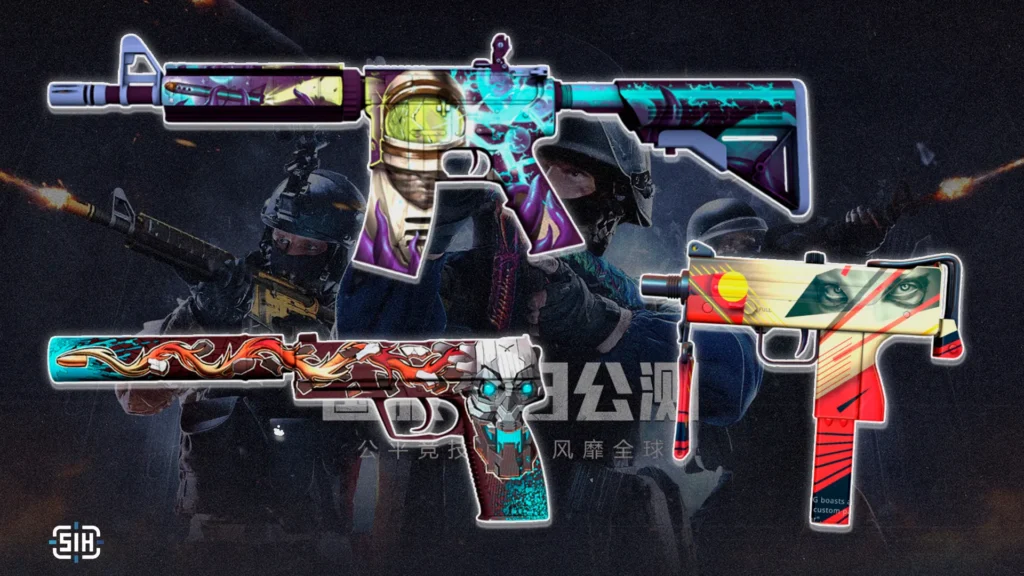
China is a country where censorship affects even the most mundane things. Not only is access to Western websites and platforms banned, but also details such as electronic cigarettes, excessively explicit scenes in films, images of skulls, blood, death symbols like scythes, or even inscriptions in foreign languages if they carry political undertones.
Even small elements — dark or occult motifs — can be removed to comply with strict local laws regulating everything from movies to video games. The influence comes not only from politics but also from cultural traditions. For instance, the number 4 is considered unlucky in China because its pronunciation sounds similar to the word “death” (死, sǐ). As a result, the number is often avoided in games, architecture, and even hotel floor numbering — forcing developers to adapt their content to steer clear of such superstitions.
These restrictions directly affect Counter-Strike 2 in China, known as Perfect World. Skins that players value for their bold and daring style are reworked to exclude prohibited elements. Skulls are transformed into animals or robots, blood is replaced with abstract patterns, and inscriptions in foreign languages are erased without a trace. We’ve compiled ten examples of such changes with prices and analysis of the reasons for the edits. Some adaptations turned out so original that they could become popular even in the global version of the game, adding uniqueness and freshness to the familiar inventory.
UMP-45 | Primal Saber
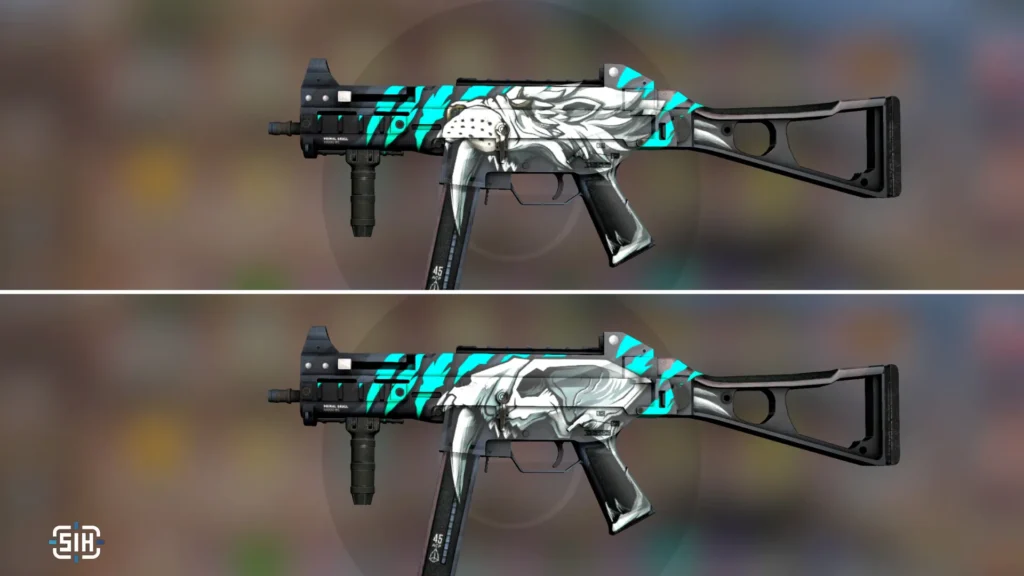
The original UMP-45 skin was adorned with a saber-toothed tiger skull – a grim symbol of prehistoric power that perfectly fit the weapon’s aggressive style. However, in China, skulls are strictly prohibited, even if they belonged to an extinct beast. Perfect World designers didn’t just paint over the skull but completely reimagined the concept: now the body features a living predator with blazing eyes and bared fangs. This new design adds dynamics and wild energy, turning the weapon into an embodiment of primal fury. Honestly, this version looks so powerful that it could become a hit outside China as well.
USP-S | Cortex
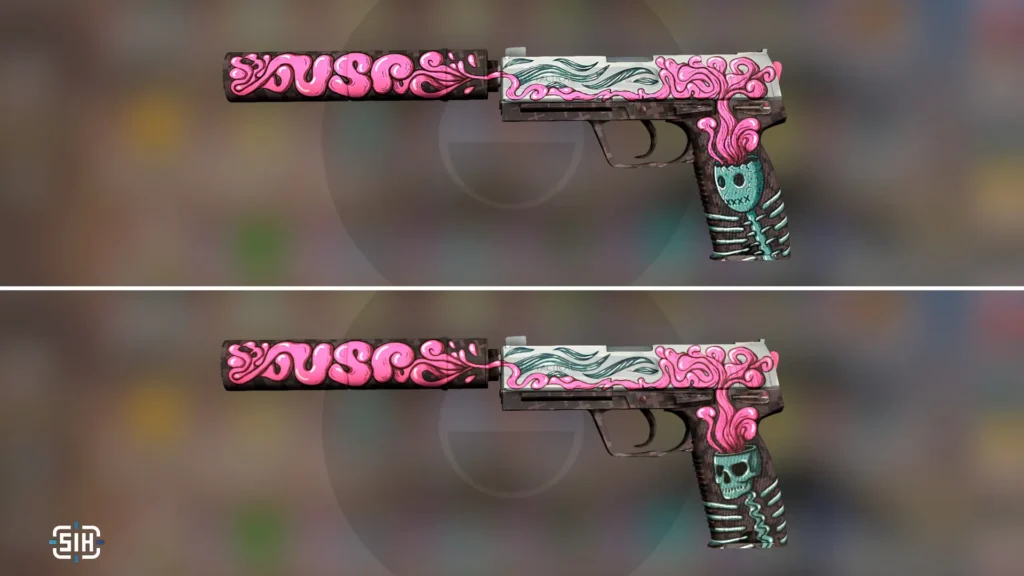
This pistol in the original is decorated with a skeleton, where the skull on the grip plays a key role, and patterns resembling flowing brains are scattered along the barrel. In China, the skull is banned and was replaced with a scarecrow without a straw hat that looks like a character from a strange village tale. Surprisingly, the abstract “brain” elements were left unchanged by censors, apparently considering them neutral enough. Interestingly, players in the global version often cover this part with stickers, creating their own custom designs, so the designers’ efforts for China are sometimes simply lost under the decals. This edit makes the skin slightly comical, but at the same time emphasizes how censorship can create unexpected images that add a certain charm to the game.
MAC-10 | Curse
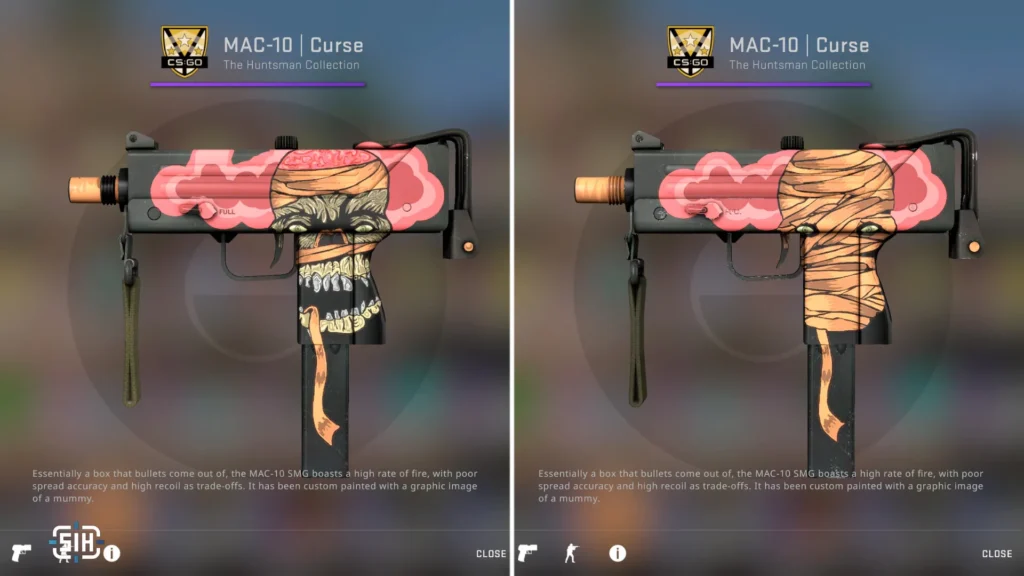
The original MAC-10 | Curse was decorated with a portrait of a mummy with frighteningly lifelike eyes that seemed to hold ancient secrets. In China, images of the dead, even stylized ones, are banned, so the mummy was completely wrapped in bandages, leaving only the eyes to preserve the mystical atmosphere. It seems the designers decided to play it safe in advance, knowing about the strict rules. The resulting skin became even more mysterious: now it resembles an artifact from a forgotten temple that hides its power under layers of fabric. This adaptation adds depth, turning the weapon into something more, carrying an ancient story ready to be revealed at the right moment.
MAC-10 | Propaganda
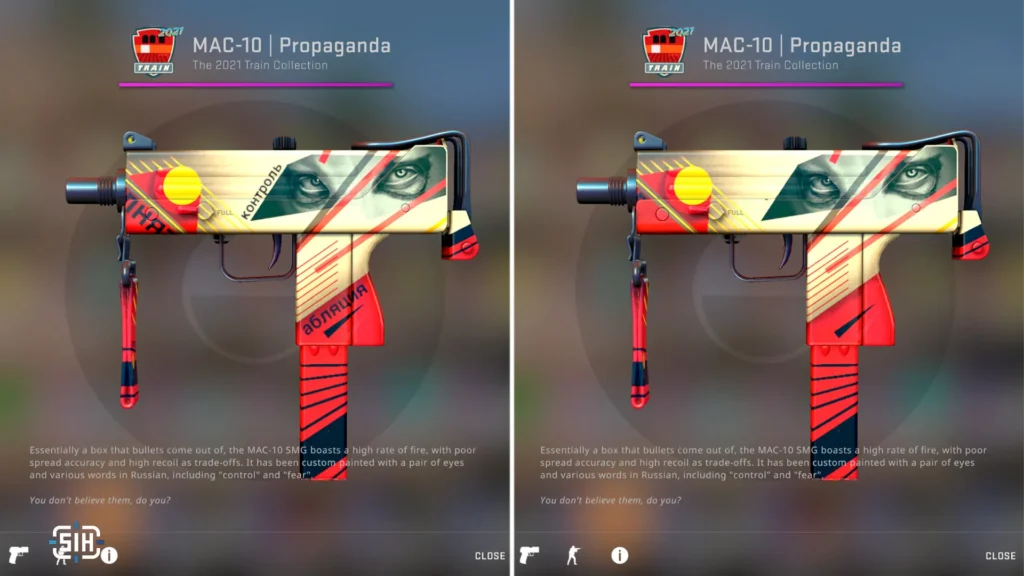
This skin from the Train 2021 collection, which has already received an update in the form of Train 2025, was originally decorated with Russian inscriptions hinting at a political context. In China, any such elements are banned, so the inscriptions were completely removed, leaving only the graphic foundation. Without them, the skin became more minimalist but lost part of its historical and cultural subtext that made it unique. Now it looks like a blank canvas where the emphasis has shifted to visual form rather than words. This change shows how censorship can simplify design, but at the same time makes it universal, allowing players to imagine the story behind this weapon themselves.
M4A4 | In Living Color
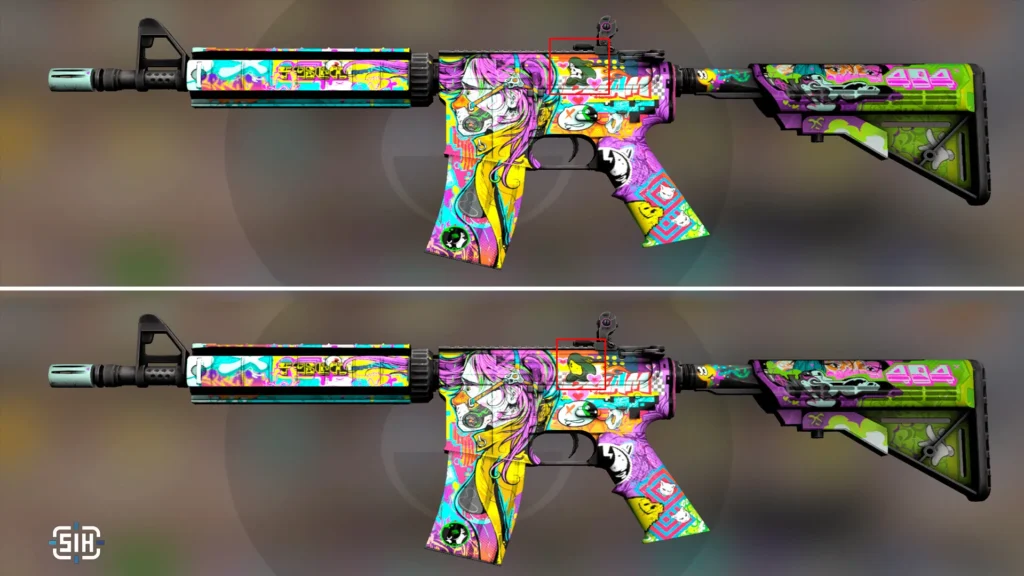
This rifle in the original is a real explosion of colors and small details, among which a tiny death symbol is hidden. In China, it was replaced with a cartoonish face that almost gets lost in the bright chaos of the design. It seems the authors decided not to take risks and immediately prepared a “safe” version for the Chinese market. The change is so insignificant that only the most attentive fans will notice it, but it emphasizes the strictness of censorship: even small details can become a problem. The new design retains its brightness and energy, and perhaps the cartoonish element adds lightness to the skin, making it slightly more friendly in combat.
Five-SeveN | Scrawl
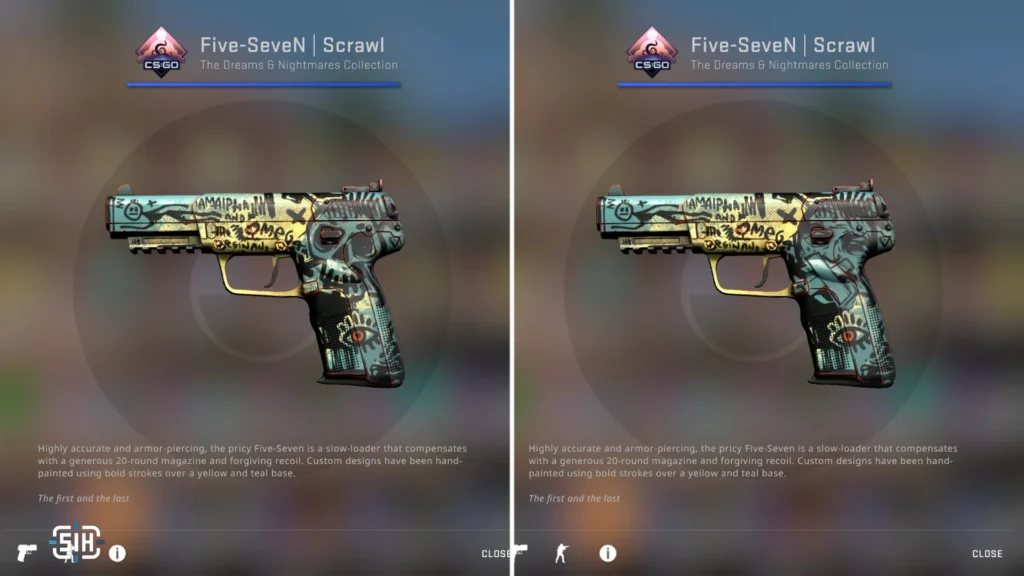
The original design of this pistol features a bright yellow-gray background covered with chaotic graffiti with a central accent in the form of a skull surrounded by abstract patterns and inscriptions in street art style. The skull on the grip and barrel emphasizes the “nightmares” theme from The Dreams & Nightmares Collection, adding a dark aesthetic and a sense of rebellion. As we already know, in China the skull is banned due to associations with death, which led to its replacement with a stylized face of a man with a taped mouth. The new design maintains the brightness and complexity of the patterns, softening the dark tone and adding a cyberpunk note, making the skin safe for the local market while preserving its appeal and turning it into an alternative but no less interesting version.
M4A4 | Desolate Space
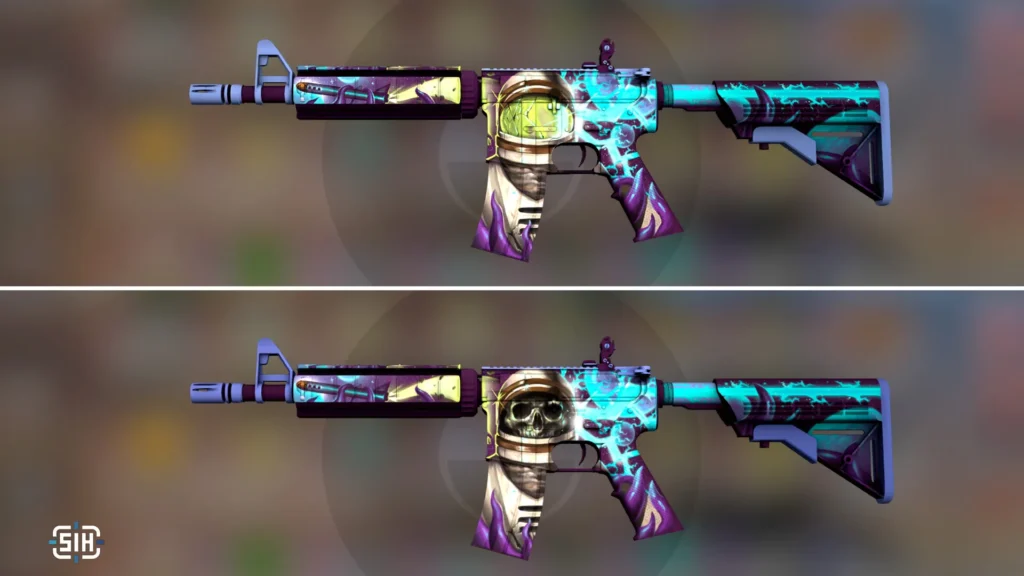
One of the most popular skins for the M4A4 without a silencer, this design takes the player into desolate space with an astronaut whose skull is visible through the spacesuit helmet. In China, the skull was painted over with yellow glass, preserving the cosmic aesthetic. The change is minimal, but it doesn’t spoil the overall impression: the skin remains epic, with a sense of emptiness and loneliness. Fans love it in both versions, and this proves that censorship can be delicate, preserving the essence and allowing the weapon to remain a favorite in the arsenal.
Sawed-Off | Apocalypto
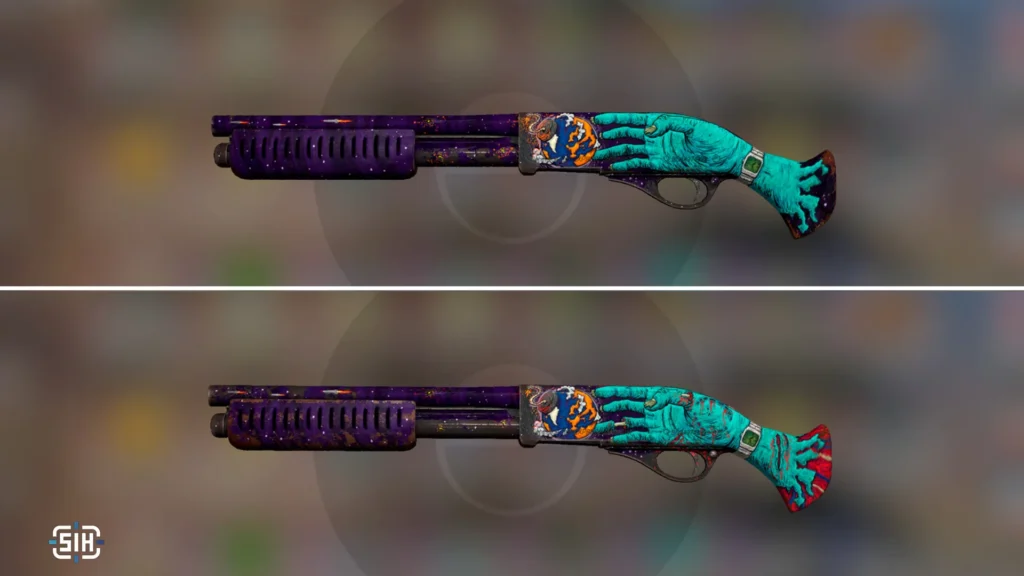
This shotgun, rarely used in the game but loved by many for its cosmic design, lost a small but important detail: a broken finger touching Earth as a symbol of the apocalypse with a drop of blood. In China, such images are banned, but the rest of the art with planets and debris remained untouched. The edit seems insignificant, but it was precisely such details that made the skin special, adding philosophical subtext about the end of the world. Now it’s slightly less dramatic but still evokes admiration for its uniqueness.
USP-S | Kill Confirmed
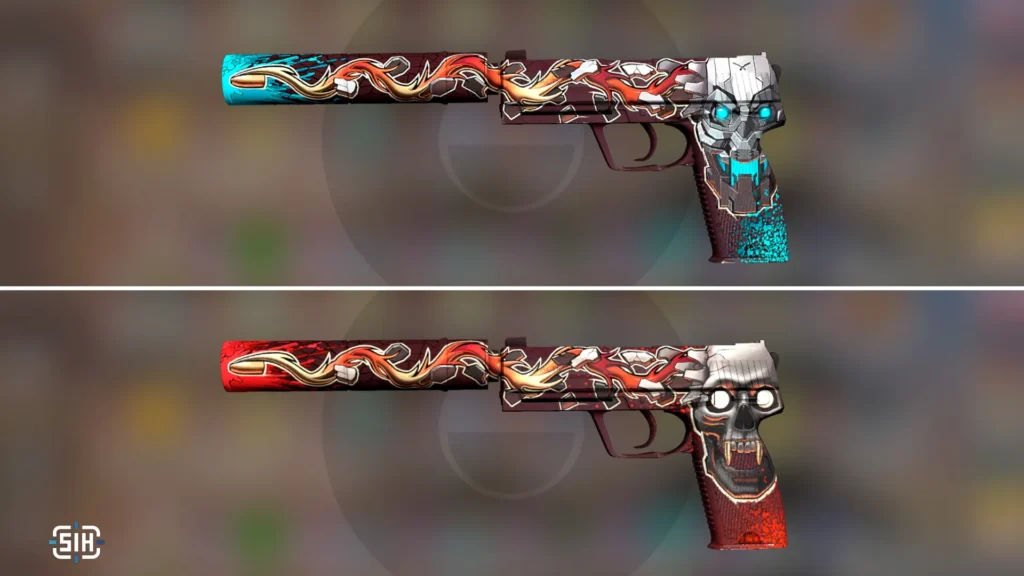
This premium skin underwent radical reworking: the skull was replaced with a robot head, and red blood with blue “technical” fluid. Changes in the color scheme and key elements make the Chinese version a completely new work that resembles cyberpunk aesthetics more than the original thriller. This is a rare case where censorship creates something unique: the skin looks like a weapon from a futuristic action film, and its high price is justified by the new level of detail and style.
Galil AR | Chatterbox
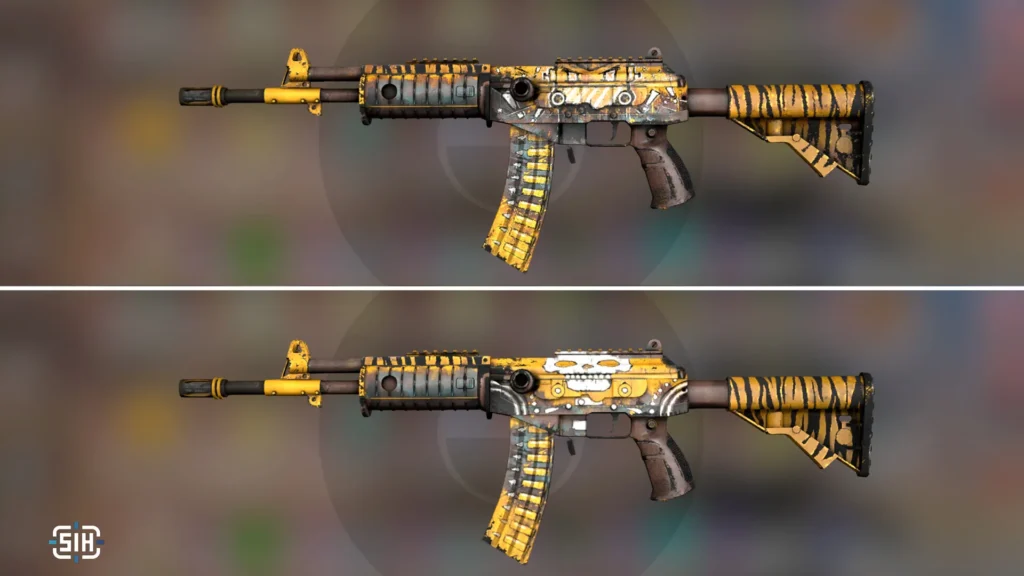
The skull on this skin turned into a robot head, but the main feature remained: the jaws are positioned so that when firing, it seems as if the rifle is “spitting out” shell casings. This animation makes the skin alive, and censorship didn’t destroy its concept. The new design preserves the dynamics and even adds a sci-fi note, turning the weapon into a talkative cyborg. This is an example where adaptation enhances the idea, making the skin a hit for those who value mechanics and visuals equally.

Author: Alex
Alex is an author and esports observer with more than seven years of experience. He specializes in analyzing new releases in the world of computer games, gaming services, and in-game economies. Alex shares practical experience and an expert perspective on the development of gaming, helping readers understand complex mechanics and stay up to date with the latest news.